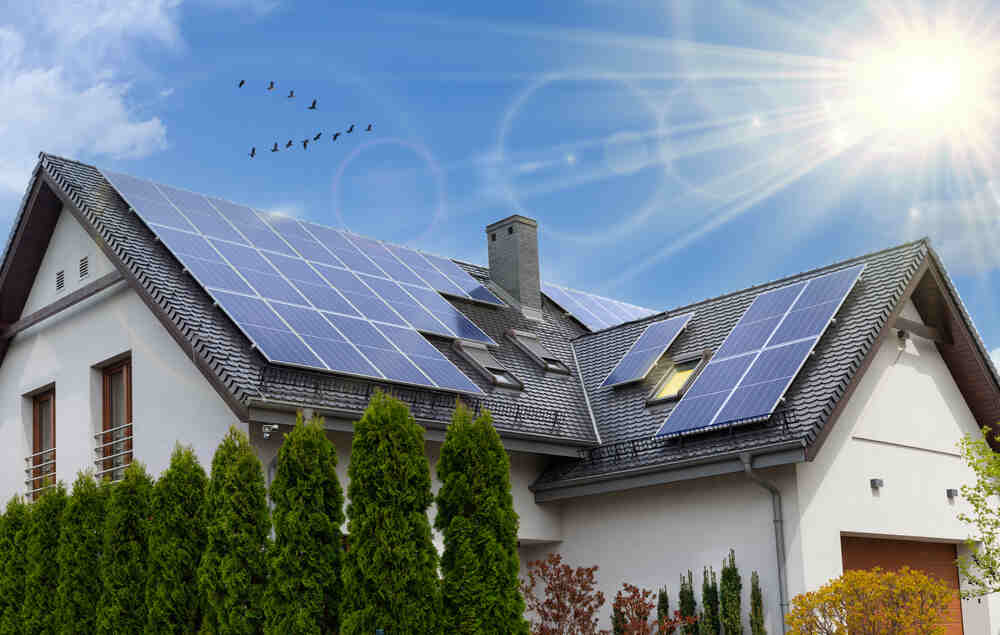Choosing the right solar panels is a big decision that impacts your home’s energy efficiency, long-term savings, and your environmental footprint. With so many types, brands, and technologies available, it can feel overwhelming to find the perfect fit. This guide covers everything you need to know to choose the best solar panels for your home, budget, and energy needs.
1. Understanding Types of Solar Panels
There are three primary types of solar panels, each with unique benefits:
- Monocrystalline Panels
Made from a single silicon crystal, these panels are the most efficient and space-saving, ideal if you have limited roof space or want a high-energy output. - Polycrystalline Panels
Composed of multiple silicon crystals, polycrystalline panels are slightly less efficient but more affordable than monocrystalline panels, making them a good middle-ground option. - Thin-Film Panels
Lightweight and flexible, thin-film panels are the least efficient but can be installed on roofs with limited weight capacity. They’re also commonly used in large commercial setups.
2. Efficiency and Performance
Panel efficiency measures how much sunlight is converted into usable energy. Higher efficiency panels generate more power in less space, making them ideal for small rooftops. However, they can come at a premium. Consider your roof space and energy goals to determine the best balance between cost and efficiency.
3. Durability and Warranty
Look for solar panels with a robust warranty, ideally between 20 and 25 years. High-quality panels come with a performance guarantee, ensuring that they won’t degrade significantly over time. You’ll also want to consider weather durability, especially if you live in areas with high winds, snow, or hail.
4. Temperature Coefficient
The temperature coefficient indicates how well a panel performs in high temperatures. Solar panels lose efficiency as temperatures rise, so a lower coefficient means better performance in warmer climates. This factor is crucial if you live in a hot area and want to maximize energy production.
5. Cost vs. Long-Term Savings
While high-efficiency panels are more expensive upfront, they can lead to higher energy savings over time. Factor in installation costs, incentives, and energy savings to estimate your return on investment. Local rebates, federal tax credits, and other incentives can significantly reduce the cost of going solar.
6. Solar Panel Brands and Quality
Research reputable brands that offer reliable customer service and consistent quality. Top solar panel manufacturers include LG, SunPower, Panasonic, and Canadian Solar, known for high-quality products and good warranties. Read reviews and consult with installers for recommendations on trusted brands.
7. Installation and Inverter Selection
Proper installation is key to getting the most out of your solar panels. Choose an installer with experience, strong customer reviews, and relevant certifications. Additionally, consider the type of inverter you need (string inverters, microinverters, or power optimizers) to ensure your panels operate efficiently.
8. Aesthetic and Space Considerations
If aesthetics are a priority, choose black monocrystalline panels for a sleek look. Additionally, evaluate the available roof space and orientation to make sure your panels get optimal sunlight exposure. South-facing roofs typically receive the most sun, but professional installers can help design a system that works with your specific layout.
9. Maintenance and Care
Solar panels require minimal maintenance but still need occasional cleaning and inspections. Dust, debris, and bird droppings can reduce efficiency, so plan for regular cleanings and check-ups to keep your system running smoothly.
10. Getting a Solar Quote
Once you’ve narrowed down your options, reach out to certified solar installers for quotes. Look for detailed estimates that include panel types, installation costs, estimated savings, and maintenance plans. Compare offers to find the best value for your investment.



